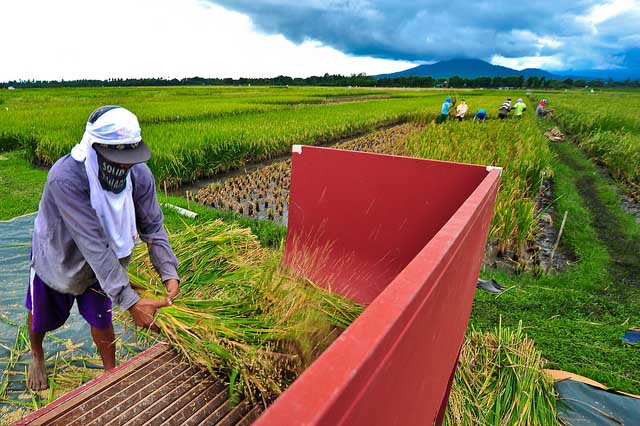Guidelines on proper threshing
- For hand threshed crops, partial drying in the field for a couple of days may be necessary to lower the moisture content and make threshing easier.
- The highest milling yield will be attained for hand threshed, sun dried rice at grain moisture content between 18–20%.
- Care must be taken not to overdry the crop if it is to be transported any distance before threshing as excessive shattering will occur.
- While the crop may be dried before threshing, dried crop should not be subjected to rewetting. Rewetting causes grain fissures which lead to high broken grain when milled.
For machine threshing
- Harvest the grain at optimum maturity to maximize yield and minimize losses. Axial-flow threshers that are particularly designed for rice can handle very wet crop.
- Timing of threshing
Ideally, machine threshing should begin immediately after cutting and often these crops can be threshed in the field.
Immediate threshing reduces the exposure of crop to insects, birds and rodents, disease, and molds. Crop that is piled over a period of time generates heat that will serve as an ideal medium for growth of molds, disease and pests. Piling for several days will lead to grain discoloration, germinated grains, and spoilage. - Machine adjustments
Always make sure that threshing drum speed and the cleaner settings are done properly according to the crop conditions. Wrongly adjusted threshers create higher threshing loss and grain damage.
